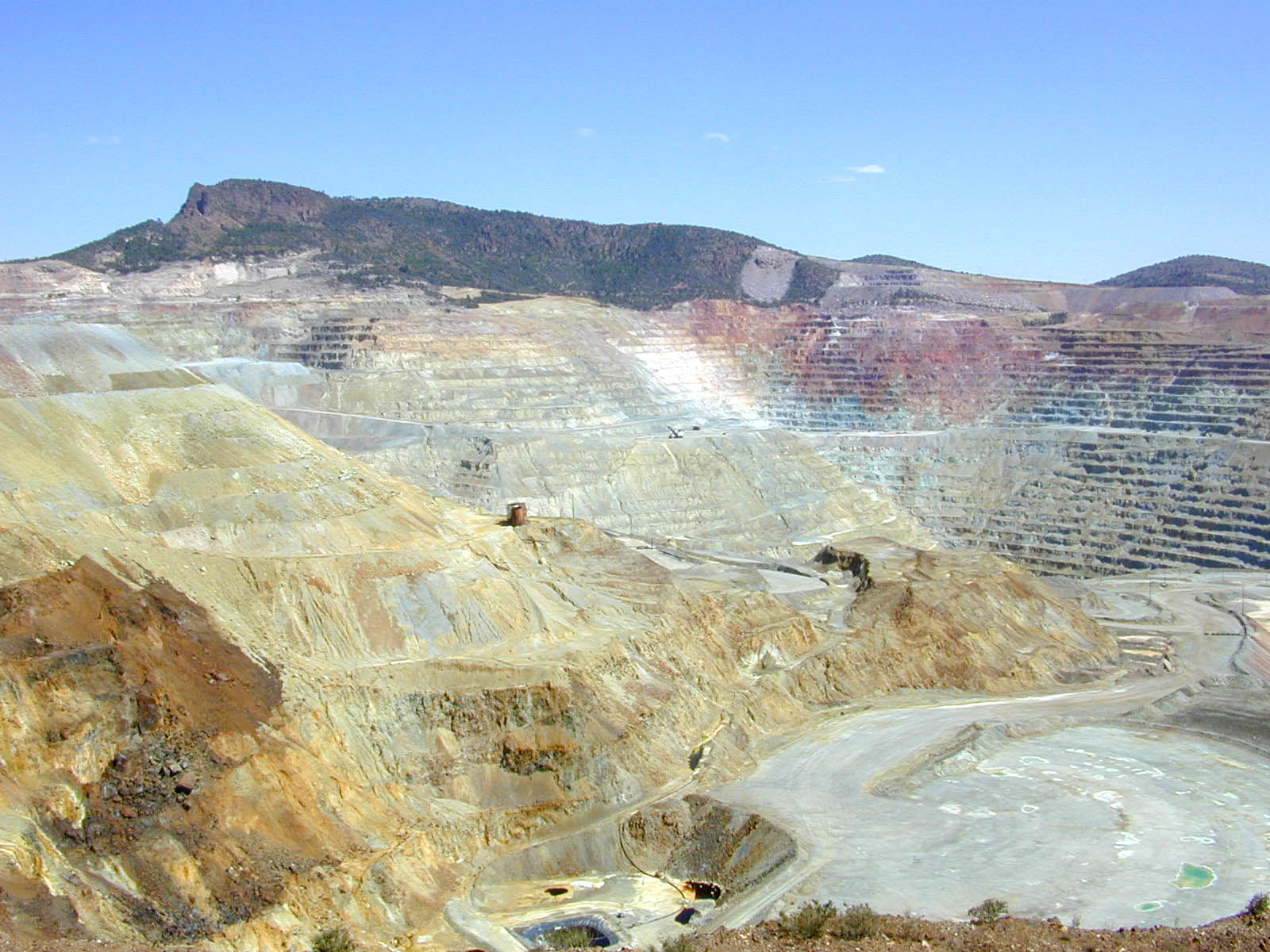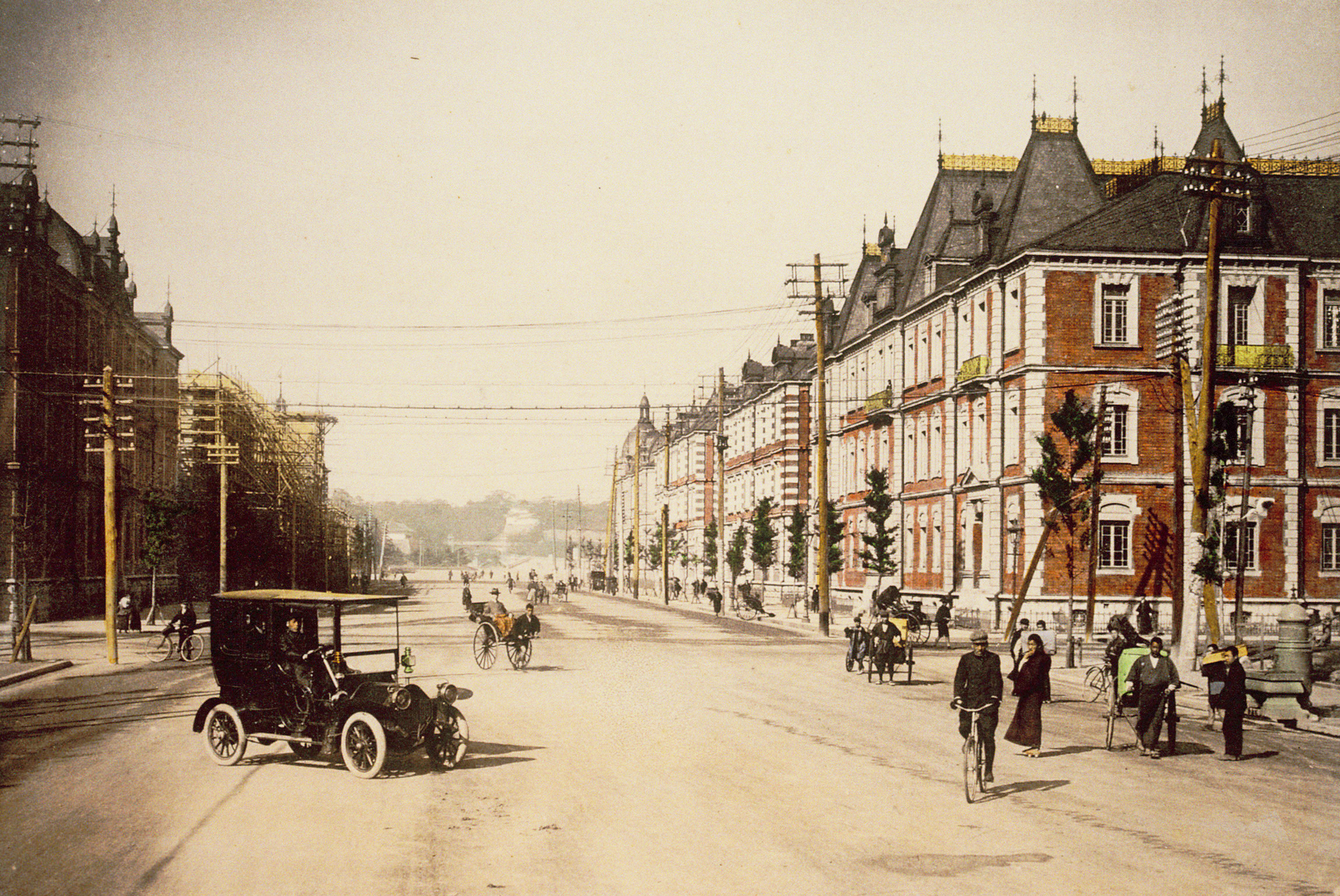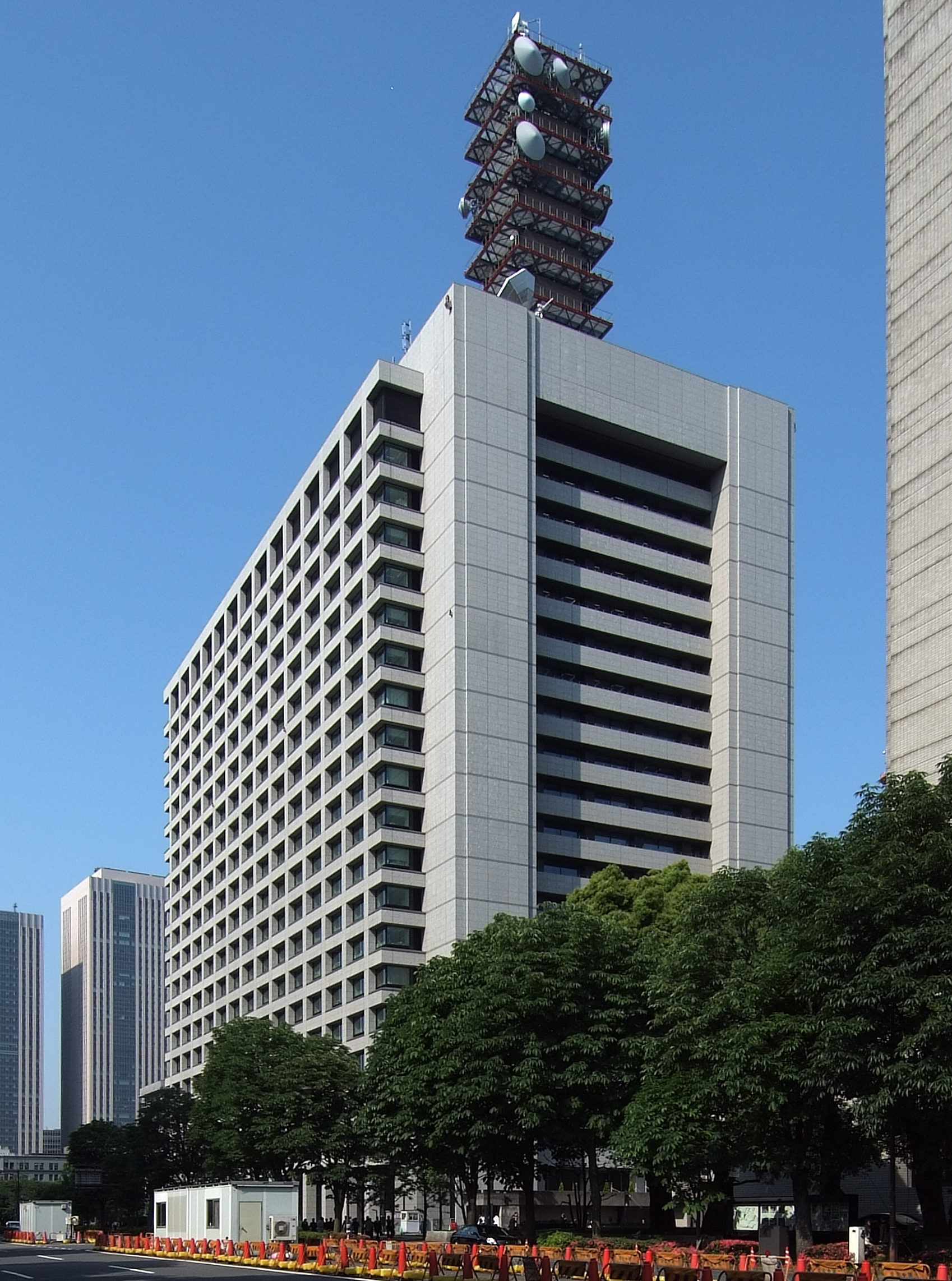|
Besshi Copper Mine
The was a rich source of copper in Niihama, Ehime Prefecture, Japan. The deposits were discovered in 1690, and copper mining began in the following year. From then until the closing of the mine in 1973, Besshi produced about 700,000 tons of copper, and contributed to Japan's trade and modernization. The Sumitomo family managed the mine, which helped build the Sumitomo ''zaibatsu.'' The Dōzan River The is the largest branch of the Yoshino River and flows through Ehime and Tokushima is a prefecture of Japan located on the island of Shikoku. Tokushima Prefecture has a population of 728,633 (1 October 2019) and has a geographic area ... was named after the copper mine. The Minetopia Besshi theme park uses some of the mine's facilities. External linksBesshi Dōzan(Niihama official web site)( Ministry of Land, Infrastructure and Transport) Copper mines in Japan Buildings and structures in Ehime Prefecture Sumitomo Heavy Industries Niihama, Ehime Former mines ... [...More Info...] [...Related Items...] OR: [Wikipedia] [Google] [Baidu] |
Niihama, Ehime
270px, Niihama City Hall 270px, Aerial View of Central Niihama is a city located in the eastern part of Ehime Prefecture, Japan. , the city had an estimated population of 115,824 in 57781 households and a population density of 490 persons per km². The total area of the city is . It has the third largest population in Ehime, behind the prefectural capital of Matsuyama and the recently expanded city of Imabari. It is famous for its Besshi copper mine as well as the annual Niihama Taiko Festival (also known as "The Man Festival", ''otokomatsuri'' 男祭り) that is the center of annual drunken and boisterous activity, drawing tourists from around the country to watch this festival Geography Niihama is positioned in the north-center area of the island of Shikoku, in the eastern part of Ehime Prefecture. Niihama is enveloped by mountains to the south and east, hills to the west, and the Seto Inland Sea to the north. The Kokuryo River flows from the mountains to the Seto Inland Se ... [...More Info...] [...Related Items...] OR: [Wikipedia] [Google] [Baidu] |
Ehime Prefecture
is a prefecture of Japan located on the island of Shikoku. Ehime Prefecture has a population of 1,342,011 (1 June 2019) and has a geographic area of 5,676 km2 (2,191 sq mi). Ehime Prefecture borders Kagawa Prefecture to the northeast, Tokushima Prefecture to the east, and Kōchi Prefecture to the southeast. Matsuyama is the capital and largest city of Ehime Prefecture and the largest city on Shikoku, with other major cities including Imabari, Niihama, and Saijō. Notable past Ehime residents include three Nobel Prize winners: they are Kenzaburo Oe (1994 Nobel Prize in Literature), Shuji Nakamura (2014 Nobel Prize in Physics), and Syukuro Manabe (2021 Nobel Prize in Physics). History Until the Meiji Restoration, Ehime Prefecture was known as Iyo Province. Since before the Heian period, the area was dominated by fishermen and sailors who played an important role in defending Japan against pirates and Mongolian invasions. After the Battle of Sekigahara, the Tokugaw ... [...More Info...] [...Related Items...] OR: [Wikipedia] [Google] [Baidu] |
Japan
Japan ( ja, 日本, or , and formally , ''Nihonkoku'') is an island country in East Asia. It is situated in the northwest Pacific Ocean, and is bordered on the west by the Sea of Japan, while extending from the Sea of Okhotsk in the north toward the East China Sea, Philippine Sea, and Taiwan in the south. Japan is a part of the Ring of Fire, and spans Japanese archipelago, an archipelago of List of islands of Japan, 6852 islands covering ; the five main islands are Hokkaido, Honshu (the "mainland"), Shikoku, Kyushu, and Okinawa Island, Okinawa. Tokyo is the Capital of Japan, nation's capital and largest city, followed by Yokohama, Osaka, Nagoya, Sapporo, Fukuoka, Kobe, and Kyoto. Japan is the List of countries and dependencies by population, eleventh most populous country in the world, as well as one of the List of countries and dependencies by population density, most densely populated and Urbanization by country, urbanized. About three-fourths of Geography of Japan, the c ... [...More Info...] [...Related Items...] OR: [Wikipedia] [Google] [Baidu] |
Sumitomo Group
The is one of the largest Japanese ''keiretsu'', or business groups, founded by Masatomo Sumitomo (1585-1652) around 1615 during the early Edo period. History The Sumitomo Group traces its roots to a bookshop in Kyoto founded circa 1615 by Masatomo Sumitomo, a former Buddhist monk. Even today management of the group is guided by his "Founder's Precepts", written in the 17th century. Copper refining made the company famous. Riemon Soga, Masatomo Sumitomo's brother-in-law, learned Western methods of copper refining. In 1590 he established a smelting business, ''Izumiya'', literally meaning "spring shop". Riemon perfected techniques that allowed the extraction of silver from copper ore, something Japanese technology had not previously accomplished. The smelting and smithing business was moved from Kyoto to Osaka by the late 17th century. Soga passed control of the company to his son Tomomochi who managed its transformation into a major trading house during the Edo period. Sumitom ... [...More Info...] [...Related Items...] OR: [Wikipedia] [Google] [Baidu] |
Copper
Copper is a chemical element with the symbol Cu (from la, cuprum) and atomic number 29. It is a soft, malleable, and ductile metal with very high thermal and electrical conductivity. A freshly exposed surface of pure copper has a pinkish-orange color. Copper is used as a conductor of heat and electricity, as a building material, and as a constituent of various metal alloys, such as sterling silver used in jewelry, cupronickel used to make marine hardware and coins, and constantan used in strain gauges and thermocouples for temperature measurement. Copper is one of the few metals that can occur in nature in a directly usable metallic form ( native metals). This led to very early human use in several regions, from circa 8000 BC. Thousands of years later, it was the first metal to be smelted from sulfide ores, circa 5000 BC; the first metal to be cast into a shape in a mold, c. 4000 BC; and the first metal to be purposely alloyed with another metal, tin, to create ... [...More Info...] [...Related Items...] OR: [Wikipedia] [Google] [Baidu] |
Copper
Copper is a chemical element with the symbol Cu (from la, cuprum) and atomic number 29. It is a soft, malleable, and ductile metal with very high thermal and electrical conductivity. A freshly exposed surface of pure copper has a pinkish-orange color. Copper is used as a conductor of heat and electricity, as a building material, and as a constituent of various metal alloys, such as sterling silver used in jewelry, cupronickel used to make marine hardware and coins, and constantan used in strain gauges and thermocouples for temperature measurement. Copper is one of the few metals that can occur in nature in a directly usable metallic form ( native metals). This led to very early human use in several regions, from circa 8000 BC. Thousands of years later, it was the first metal to be smelted from sulfide ores, circa 5000 BC; the first metal to be cast into a shape in a mold, c. 4000 BC; and the first metal to be purposely alloyed with another metal, tin, to create ... [...More Info...] [...Related Items...] OR: [Wikipedia] [Google] [Baidu] |
Copper Mining
Copper extraction refers to the methods used to obtain copper from its ores. The conversion of copper consists of a series of physical and electrochemical processes. Methods have evolved and vary with country depending on the ore source, local environmental regulations, and other factors. As in all mining operations, the ore must usually be beneficiated (concentrated). The processing techniques depend on the nature of the ore. If the ore is primarily sulfide copper minerals (such as chalcopyrite), the ore is crushed and ground to liberate the valuable minerals from the waste ('gangue') minerals. It is then concentrated using mineral flotation. The concentrate is typically sold to distant smelters, although some large mines have smelters located nearby. Such colocation of mines and smelters was more typical in the 19th and early 20th centuries, when smaller smelters could be economic. The sulfide concentrates are typically smelted in such furnaces as the Outokumpu or Inco f ... [...More Info...] [...Related Items...] OR: [Wikipedia] [Google] [Baidu] |
Sumitomo
The is one of the largest Japanese ''keiretsu'', or business groups, founded by Masatomo Sumitomo (1585-1652) around 1615 during the early Edo period. History The Sumitomo Group traces its roots to a bookshop in Kyoto founded circa 1615 by Masatomo Sumitomo, a former Buddhist monk. Even today management of the group is guided by his "Founder's Precepts", written in the 17th century. Copper refining made the company famous. Riemon Soga, Masatomo Sumitomo's brother-in-law, learned Western methods of copper refining. In 1590 he established a smelting business, ''Izumiya'', literally meaning "spring shop". Riemon perfected techniques that allowed the extraction of silver from copper ore, something Japanese technology had not previously accomplished. The smelting and smithing business was moved from Kyoto to Osaka by the late 17th century. Soga passed control of the company to his son Tomomochi who managed its transformation into a major trading house during the Edo period. Sumitom ... [...More Info...] [...Related Items...] OR: [Wikipedia] [Google] [Baidu] |
Zaibatsu
is a Japanese language, Japanese term referring to industrial and financial vertical integration, vertically integrated business conglomerate (company), conglomerates in the Empire of Japan, whose influence and size allowed control over significant parts of the Japanese economy from the Meiji period until the end of World War II. A ''zaibatsu'' general structure included a family-owned holding company on top, and a bank which financed the other, mostly industrial subsidiaries within them. Although the ''zaibatsu'' played an important role in the Japanese economy from the 1860s to 1945, they increased in number and importance following the Russo-Japanese War of 1904–1905, World War I and Japan's subsequent attempt to conquer East Asia during the inter-war period and World War II. After World War II they were dissolved by the Occupation of Japan, Allied occupation forces and succeeded by the ''keiretsu'' (groups of banks, manufacturers, suppliers, and distributors). Equivalents ... [...More Info...] [...Related Items...] OR: [Wikipedia] [Google] [Baidu] |
Dōzan River
The is the largest branch of the Yoshino River and flows through Ehime and Tokushima prefectures in Japan. Its name was derived from the Besshi copper mine that is now closed. In Tokushima Prefecture, it is called the Iyo River (伊予川 ''Iyo-gawa''). Geography The rivers originates Mount Kanmuri on the borders of Ehime and Kōchi prefectures. It then flows through Shikokuchūō is a city located in Ehime Prefecture, Japan. , the city had an estimated population of 83,635 in 28876 households and a population density of 200 persons per km². The total area of the city is . Shikokuchūō is the leading producer of pape ... in Ehime Prefecture and Miyoshi in Tokushima Prefecture, before joining with the Yoshino River. History In 1900, poisons from the various minerals excavated at the nearby copper mine seeped into the river, poisoning the local populations downstream. References Rivers of Ehime Prefecture Rivers of Tokushima Prefecture Rivers of Japan {{ ... [...More Info...] [...Related Items...] OR: [Wikipedia] [Google] [Baidu] |
Ministry Of Land, Infrastructure And Transport (Japan)
The , abbreviated MLIT, is a ministry of the Japanese government.国土交通省設置法 , Ministry of Internal Affairs and Communications. It is responsible for one-third of all the laws and orders in Japan, and is the largest Japanese ministry in terms of employees, as well as the second-largest executive agency of the Japanese government after the . The ministry oversees four external agencies including the and the |
Copper Mines In Japan
Copper is a chemical element with the symbol Cu (from la, cuprum) and atomic number 29. It is a soft, malleable, and ductile metal with very high thermal and electrical conductivity. A freshly exposed surface of pure copper has a pinkish-orange color. Copper is used as a conductor of heat and electricity, as a building material, and as a constituent of various metal alloys, such as sterling silver used in jewelry, cupronickel used to make marine hardware and coins, and constantan used in strain gauges and thermocouples for temperature measurement. Copper is one of the few metals that can occur in nature in a directly usable metallic form (native metals). This led to very early human use in several regions, from circa 8000 BC. Thousands of years later, it was the first metal to be smelted from sulfide ores, circa 5000 BC; the first metal to be cast into a shape in a mold, c. 4000 BC; and the first metal to be purposely alloyed with another metal, tin, to create bronze, c. 3 ... [...More Info...] [...Related Items...] OR: [Wikipedia] [Google] [Baidu] |




